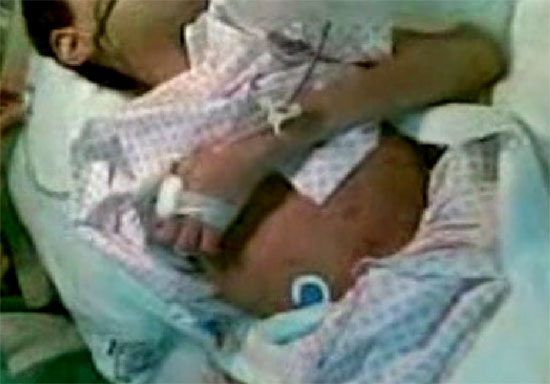We diagnosed abdominal myoclonus in an 8-year-old boy with terminal
stage of neuronal ceroid lipofuscinosis (NCL). He was normal up to two
years of age when he had onset of myoclonic seizures. Over time his
seizures worsened. He lost speech and mobility by six years. Recently he
was admitted with recurrent seizures and frequent jerking of the
abdominal muscles. His three siblings had died of similar illness.
Examination revealed choreathetoid movements of limbs, multifocal
myoclonus, and diaphragmatic myoclonus (Web
Video I). Surface electromyography (EMG) electrodes applied
on the abdomen wall revealed around 120 contractions per minute.
Electroencephalography (EEG) showed bihemispherical periodic discharges
at rate of 1.5 to 2 per second, left side more than right. Intravenous
bolus of phenytoin followed by midazolam infusion controlled his
abdominal (diaphragmatic) contractions.
 |
|
Fig. 1 Diaphragmatic myoclonus in a
child (see Video at website).
|
Diaphragmatic myoclonus (flutter) is an abnormal
movement of diaphragm resulting in inward and outward movements of
abdominal wall synchronous with diaphragm contractions. In case other
respiratory muscles are involved, it is called respiratory myoclonus.
Other names like moving umbilicus syndrome, and belly dancerís
dyskinesia have also been given. The diagnosis of diaphragmatic
movements can be confirmed by EMG of diaphragm, or on fluoroscopy. The
origin of the myoclonus is believed to be the brainstem, basal ganglia
or cortex.

